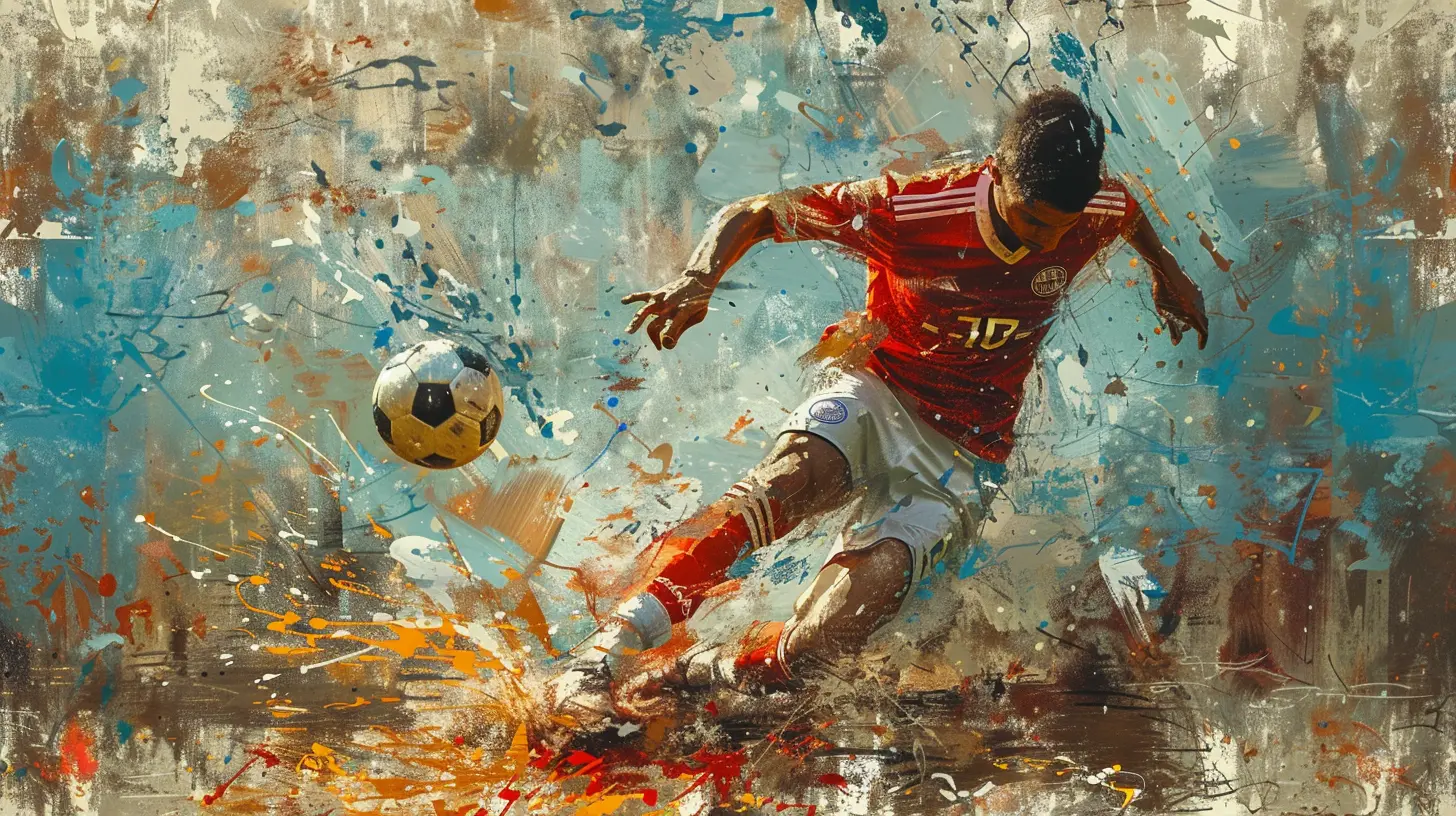Mastering the Art of the Long Ball in Football
22 August 2025
Ah, the long ball—football’s version of the dramatic mic drop. There’s something magical about watching a perfectly lofted pass cut through the air, bypassing defenders, and landing beautifully at the feet of a charging forward. It’s poetry in motion, the kind of magic that makes fans leap off their seats, scream at the TV, and post slow-mo replays on social media. But it's not all flair and fairy dust. Mastering the art of the long ball in football takes brains, guts, technique, and a lot of practice.
In this article, we’ll break down the long ball like a seasoned coach drawing on a chalkboard—only more fun. We’ll dive into why it’s more than just a hopeful hoist, how to execute it perfectly, and why it’s still one of football’s most underrated weapons.
Let’s lace up and kick off!
What is a Long Ball in Football Anyway?
Alright, first things first. What are we even talking about when we say "long ball"?A long ball in football is when a player—usually a defender or a deep-lying midfielder—sends a long, high pass from one part of the field to another, usually aiming to reach a teammate positioned far down the pitch. It’s not your average short 5-yard pass. Nope—this is the big gun, often stretching 40, 50 even 60 yards.
Think of it as football’s version of an airstrike: fast, distant, and potentially devastating when it lands just right.
But make no mistake—this isn’t just kicking it long and hoping for the best. It’s a calculated move with purpose, and when done right, it can totally change the course of a game.
The Beauty Behind the Long Ball
You might hear some fans or pundits sneer at the long ball, calling it "route one" football or labeling it as old-school. But hey, there’s a reason elite teams still use it—it works!Here's why:
1. It Catches Defenses Off Guard
Defenders usually expect short, methodical play. So when a team suddenly switches gears with a long ball, it can throw defenders into panic mode. It's like tossing a grenade into organized chaos.2. It Creates Quick Scoring Chances
Why take 20 passes to get downfield when you can do it in one? A well-timed long ball can bypass an entire midfield and set up a one-on-one with the keeper. Boom. Goal!3. It Spreads the Field
Long balls force the opposition to cover more ground and stretch out their shape. That opens up space—glorious, game-winning space—for your team to exploit.
When Should You Use a Long Ball?
Just like in life, timing is everything. You don’t launch a long ball just for the heck of it. You’ve got to pick your moment.Let’s break it down:
- Against a High Defensive Line: When defenders are playing dangerously high up the pitch, a long ball over the top can expose them big time.
- To Switch Play: Stuck on one side with pressure mounting? A diagonal long ball to the opposite wing can relieve pressure and shift the attack.
- On the Counter-Attack: Fast breaks are where long balls shine. They help you go from defending to attacking in a blink.
The Mechanics: How to Ping a Long Ball Like a Pro
Now we're getting to the good stuff. Want to strike the perfect long ball? Here’s what you need to master:1. Body Positioning
Start with your body over the ball but lean back just a touch when striking to get that lift. Your non-kicking foot should point in the direction you want the ball to go. Balance is key—if you're wobbling like a toddler, don’t expect precision.2. Foot Placement and Strike
Use the laces. That's your power zone. Strike the lower half of the ball for elevation. And don’t just swing wildly—your follow-through should be smooth and directed.3. Vision and Awareness
Before you even touch the ball, you need to see the play. Is your teammate making a run? Where are the defenders? A great long ball starts before the pass is made.4. Timing
A fraction of a second too early or too late, and the pass goes to waste. You’ve got to sync your feet with your brain and your teammate’s run.Practice Drills to Improve Your Long Ball Game
Truth bomb: No one wakes up being great at long balls. Even legends like Steven Gerrard or Andrea Pirlo spent hours fine-tuning their passing range.Here are a couple of drills that can help:
1. Target Passing
Set up cones or buckets 40–50 yards away and try to land the ball on target. It boosts your accuracy and control in a fun way.2. Partner Ping Pong
Stand 40 yards away from a teammate and ping long passes to each other. Work on hitting it with the right pace, height, and spin.3. Diagonal Switch Drill
Use the full width of the pitch and practice switching the ball from one wing to the other. Great for improving vision and awareness too.Types of Long Balls (Yep, There Are Types!)
Not every long ball is created equal. Depending on the goal, there are different kinds you might use:● The Over-the-Top Lob
Think of this as the classic “get in behind the defenders” ball. It’s lofted with backspin to gently drop in front of a runner.● The Driven Pass
Lower altitude but faster. This one zips through the air like a missile and is ideal for switching the play or feeding a striker near the box.● The Diagonal Switch
Usually played from a full-back or central midfielder to the opposite wing. It’s a game-changer when you need to stretch the field.Legendary Long Ball Masters
Let’s take a moment to salute the long ball royalty. These players turned the long pass into an art form:- Andrea Pirlo: His long balls weren’t passes—they were love letters.
- David Beckham: Precision? Check. Style? Double check.
- Steven Gerrard: He could ping a 60-yard pass with the same ease most of us order coffee.
- Toni Kroos: Ice-cold accuracy with a laser-focused gaze.
Watch these players in action, and you’ll learn more than any manual can teach.
The Role of Teammates: It Takes Two to Tango
Here’s an underrated truth: a long ball is only as good as the person receiving it.What does that mean?
- Strikers need to time their runs to perfection. Go too early, and you're offside; too late, and the ball sails away.
- Midfielders should give passing options by moving into open pockets.
- Wingers must stay wide and alert for switches of play.
It’s all about chemistry. A great long ball isn’t just booted and hoped for—it’s planned, practiced, and executed with a little football telepathy.
Long Ball in Modern Football: Old School or Still Cool?
You might think, “Isn’t the long ball kind of outdated in today's tiki-taka, possession-dominated era?”Not quite.
Modern teams like Manchester City, Real Madrid, and even Liverpool use long balls strategically. It’s not just about brute force; it’s about breaking lines, opening play, and catching opponents off guard.
Mixed with possession play, long balls add unpredictability to a team’s arsenal. That's the beauty of it—you don’t need to choose between style and substance. You can have both.
Common Mistakes (And How to Avoid Them)
Let’s not sugarcoat it—long balls can go hilariously wrong if done poorly. Skying it over into the stands or feeding your pass straight to the opposition? Yeah, we’ve all seen it.So, what should you avoid?
- Overhitting the ball: If your striker needs a jetpack to reach it, you're doing it wrong.
- Lack of vision: Kicking it blind is football suicide. Always scan the field.
- Poor body mechanics: Balance and foot placement are non-negotiable.
- Forcing the play: Don’t try long balls every five minutes. Pick your moments!
Final Whistle: Long Ball, Big Impact
At the end of the day, the long ball isn’t just a “kick and hope” tactic. It’s a weapon, a spark, a statement of intent. When executed with skill, vision, and timing, it's pure football magic.So whether you're a player looking to sharpen your passing range, a coach wanting to add a new dimension to your team, or just a fan who loves seeing a ball soar through the sky like a rocket—it’s worth diving into the artistry of the long ball.
So go ahead. Ping it long. Feel the rush. Master the craft. And become the maestro of your own midfield symphony.
all images in this post were generated using AI tools
Category:
TacticsAuthor:

Nelson Bryant
Discussion
rate this article
1 comments
Colt Castillo
Unleash your inner Beckham! Mastering the long ball is all about practice and confidence. Keep kicking, and soon you'll be a pitch-perfect pro!
September 6, 2025 at 11:27 AM

Nelson Bryant
Thank you! Practice and confidence truly make all the difference. Excited to keep improving!


